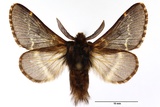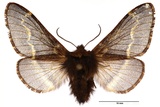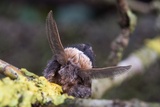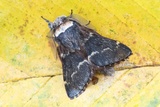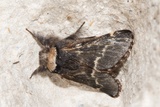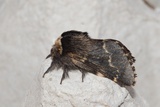Poecilocampa populi (Linnaeus, 1758) Species
Last modified: Oct. 18, 2025, 2:32 p.m.
A rather common species throughout Belgium.
This species is considered Least Concern according to the IUCN Red List category for Flanders 2023.
Details
- Classification
- Family: Lasiocampidae > Subfamily: Poecilocampinae > Tribus: Poecilocampini > Genus: Poecilocampa > Species: Poecilocampa populi
- Vernacular names
- Zwarte herfstspinner (NL), December Moth (EN), Le Bombyx du Peuplier (FR), Kleine Pappelglucke (DE)
- First mention in Belgium
- De Sélys-Longchamps E. 1837. Catalogue des Lépidoptères ou Papillons de la Belgique, précédé du tableau des Libellulines de ce pays. — — : 1–29. On page 25 (as Bombyx Populi). view page
- Status
-
Native
Distribution
Caterpillar
Caterpillars are usually observed in mid-May when they are nearly full-grown and descend from the canopy in order to pupate. However, it has been observed also that caterpillars like to hide during daytime on the tree trunks, hiding in crevices, or along twigs and they crawl to the canopy during the night in order to feed. They have an overall greyish ground colour with several whitish markings. The colour and pattern is in most cases well adapted to the tree species on which the caterpillar lives.
Bionomics
Adults come readily to light.
Flight periods
One generation per year, the adults fly from October till well in December.
Observed on
- Substrates:
- Deciduous trees
The larva lives on different deciduous trees from various families like Acer, Alnus, Betula, Corylus, Fagus, Fraxinus, Malus, Populus, Prunus, Quercus, Salix and Tilia.
Habitat
Mixed deciduous forests, parks with a lot of trees.
